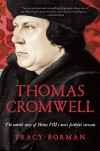SusannaG - Confessions of a Crazy Cat Lady
Just another GR refugee. Other than that, I had a stroke in 2004, and read almost anything I can get my hands on, though I have a particular weakness for history, mystery, and historical fiction.
Currently reading
The Sun and the Moon

One morning in the late summer of 1835, New Yorkers woke up to read in the newspaper that the eminent British astronomer Sir John Herschel was in Capetown, in southern Africa, where he had invented a new type of telescope. He had turned it to look at the moon, and made great discoveries; the moon possessed lakes and volcanoes, bipedal beavers, and man-bats worshiping at temples, among other wonders.
This was, of course, a hoax, but almost everyone in New York, and then a great many people in the United States generally, and many in Europe, believed it. (Hershel complained in a letter to his Aunt Caroline that he had to answer letters in four languages asking about his great discoveries on the moon - he was quite apparently very fed up.)
The great hoax was the brain child of the New York Sun, the first "penny newspaper," which started publication in 1834. Prior to that time, all of New York's papers cost six pennies a copy, and were aimed at the wealthier members of society, focusing their news on shipping reports and the stock market. None of them had anything so ungenteel as a crime beat or police court reporters. And none of them had a huge circulation.
And then there came The Sun. It cost only a penny, which the vast majority of the city's population could afford to buy. It was flacked by newsboys at every corner (something no established paper did). And it already had a large circulation by the middle of 1835, buoyed by its innovation of crime reporting, and its coverage of the spectacular murder trial of a local religious guru, "Father Matthias." It almost immediately started acquiring competitors, most notably James Gordon Bennett's New York Herald.
Bennett was one of the few in the city who immediately smelled a hoax. The others seemed to be Edgar Allan Poe, who thought the Sun had ripped off one of his stories (and he was most indignant about it), and P.T. Barnum, who knew a good con when he saw one. But few others smelled a rat, and The Sun soared in popularity to become the most read newspaper - certainly in the US, and probably on the planet.
The ironic thing is that Herschel was indeed at Capetown at the time - though he had not invented a new type of telescope, and was looking at pretty much everything except the moon!
















 11
11
 10
10